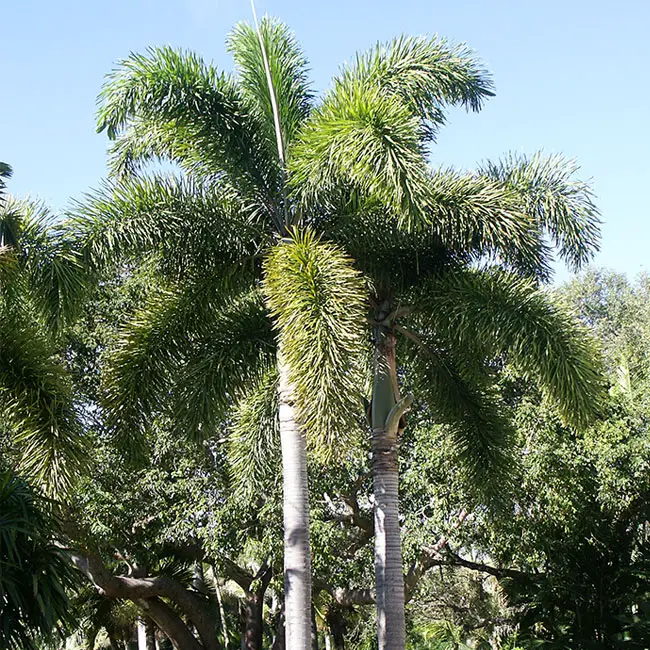
The Foxtail Palm Tree, scientifically known as Wodyetia bifurcata, boasts one of the most spectacular displays of foliage among all palm varieties. This palm has gained immense popularity due to its remarkable durability, thriving in a wide range of soil conditions, including alkaline limestone soils and rocky sands.
One of its key attributes is a robust root system, which not only enables it to withstand high winds but also makes it resilient in the face of drought. Impressively, the Foxtail Palm can even be cultivated indoors.
Quick Facts:
| Scientific name: | Wodyetia bifurcata |
| Common names: | Foxtail Palm, Fox Tail Palm, Wodyetia Palm. |
| Origin: | Native to Australia. |
| Growth Rate: | Fast. Up to 30 ft tall and 15 ft wide. |
| Cold Tolerance: | USDA Zones 10a (30 to 35 F) – 11 (above 40 F) |
| Light Req: | Partial shade to full sun. |
| Water Req: | Moderate |
| Soil Req: | Widely adaptable |
| Fruit: | Yes. Red. Not edible. |
| Propagation: | By seed, germinating in 2 – 3 months. |
Foxtail Palm Identifying Characteristics
Wodyetia bifurcate is renowned for its striking and distinctive appearance, making it a sought-after choice for landscaping and ornamental gardening.
This palm starts with a slender, solitary trunk that stands tall and upright. The trunk is known for its self-cleaning property, which means that old, dead fronds naturally fall off, leaving a clean and smooth appearance.
The trunk’s color can vary from dark gray to light gray, and it is closely ringed with prominent, evenly spaced, and slightly raised rings or scars that mark the points where old fronds have detached. Near the base, the trunk may exhibit a slight swelling.
At the top of the trunk, you’ll find a smooth, green crownshaft. This crownshaft is a distinctive feature of the Foxtail Palm and adds an attractive contrast to the gray trunk. It serves as a protective sheath for the emerging fronds.
The Foxtail Palm is most renowned for its arching fronds, which are pinnate or feather-like in appearance. These fronds grow in a graceful, symmetrical fashion, radiating out from the top of the trunk in a circular manner.
Each frond can reach impressive lengths of 6 to 10 feet (1.8 to 3 meters). The fronds are bright green, giving the palm an overall lush and tropical appearance. They have a feathery texture and are composed of numerous leaflets that are arranged along the central stem.
The leaflets of the fronds are linear and arranged in a neat and orderly fashion, giving the palm a refined and elegant look. The arrangement of these leaflets is often likened to the appearance of a fox’s tail, which is the source of the palm’s common name, “Foxtail Palm.”
Foxtail Palm Flowers and Fruits
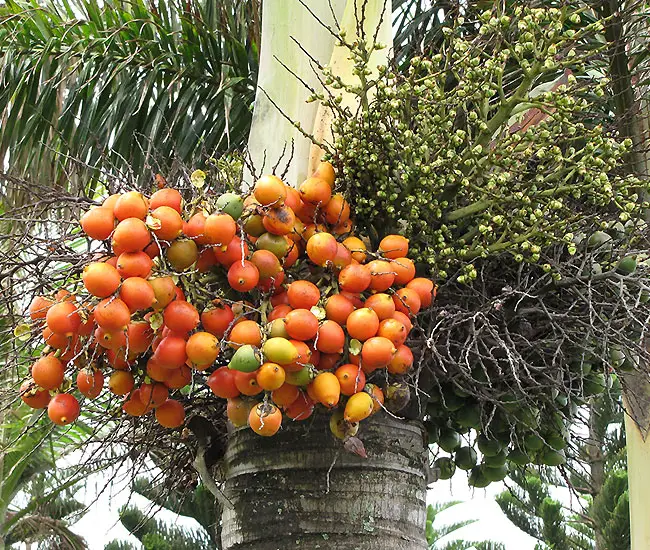
Both the flowers and fruits of the Foxtail Palm are ornamental features that enhance its visual appeal. These distinctive characteristics, along with the palm’s graceful and arching fronds, make it a popular choice for landscaping and ornamental gardening.
The Foxtail Palm produces creamy inflorescences on branched flower stalks that emerge from the base of the crownshaft. These inflorescences can be quite striking in appearance.
One notable feature of the Foxtail Palm is that it has both male and female flowers on the same plant, which is known as being monoecious. The flowers are typically not as showy as the palm’s fronds, but they contribute to the palm’s overall aesthetic.
After the flowering stage, the Foxtail Palm produces clusters of fruits. These fruits are oval in shape and measure approximately 2 inches (5 centimeters) in length.
When they are young, the fruits are green in color, but as they ripen, they undergo a transformation. Mature Foxtail Palm fruits turn red to orange-red, adding a vibrant splash of color to the palm’s canopy. Each fruit typically contains a single seed.
How To Care For Foxtail Palm
Growing a Foxtail Palm requires attention to several key care requirements to ensure its health and vitality.
Light: This palm thrives in well-lit conditions, making them ideally suited for outdoor growth. It appreciates full sun to partial shade, with the ability to adapt to a variety of light levels.
Providing your palm with the right amount of sunlight is crucial for its robust growth and the development of its characteristic lush fronds.
Soil: Well-draining soil is essential for the Foxtail Palm’s success. These palms prefer soil that allows excess water to escape, preventing the risk of root rot. While they are adaptable to a range of soil types, they excel in sandy or loamy soils with good drainage properties.
Watering: Outdoor Foxtail Palms require regular watering to maintain soil moisture. However, it’s important not to overwater, as they are susceptible to root rot if the soil becomes waterlogged. The key is to water deeply but less frequently, allowing the top layer of soil to dry out slightly between watering sessions.
Temperature: These palms thrive in warm and tropical climates, with temperatures ranging between 65°F to 80°F (18°C to 27°C) being ideal. They can tolerate short periods of cooler temperatures but should be protected from frost, as it can damage their fronds and overall health.
Pruning: Pruning should be limited to the removal of dead or yellowing fronds to maintain the palm’s appearance and health. Excessive pruning can be detrimental, as it can lead to stress and reduced growth.
Fertilization: Foxtail Palms benefit from occasional fertilization to ensure they receive essential nutrients. A balanced, slow-release palm fertilizer applied during the growing season (typically spring and summer) helps promote healthy growth and vibrant fronds.
Pest and Disease Management: While Foxtail Palms are generally resilient against pests and diseases, it’s essential to keep an eye out for common issues such as mealybugs and spider mites, which can occasionally infest the palm. Prompt treatment with insecticidal soap or neem oil can address such problems. Additionally, maintaining proper drainage is essential to prevent root rot, one of the few potential diseases that can affect Foxtail Palms.
Transplanting and Repotting: Transplanting is typically unnecessary for Foxtail Palms grown outdoors, as they can thrive in the ground. However, if you choose to move or repot your palm, ensure it has well-draining soil and an appropriate location with the right sunlight exposure.
Propagation: Propagating Foxtail Palms is primarily done through seeds found in their fruits. While it is a slow process, it is the most reliable method for expanding your Foxtail Palm collection.
Foxtail Palm Pictures

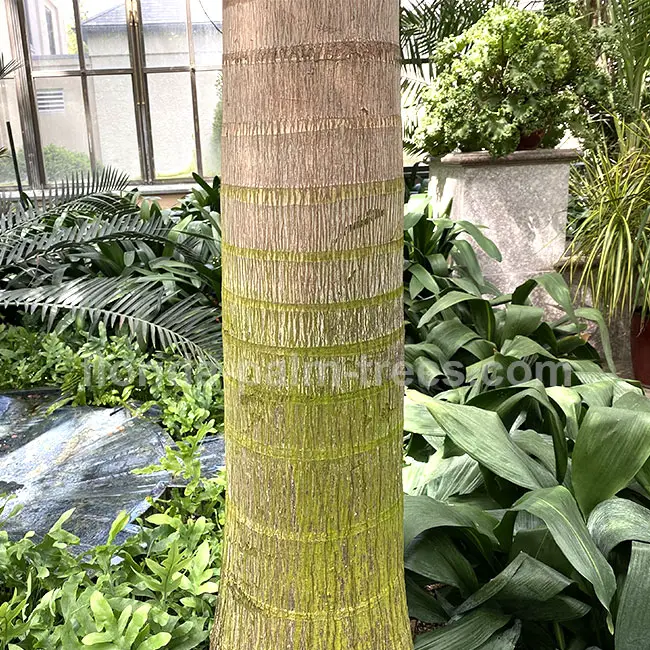
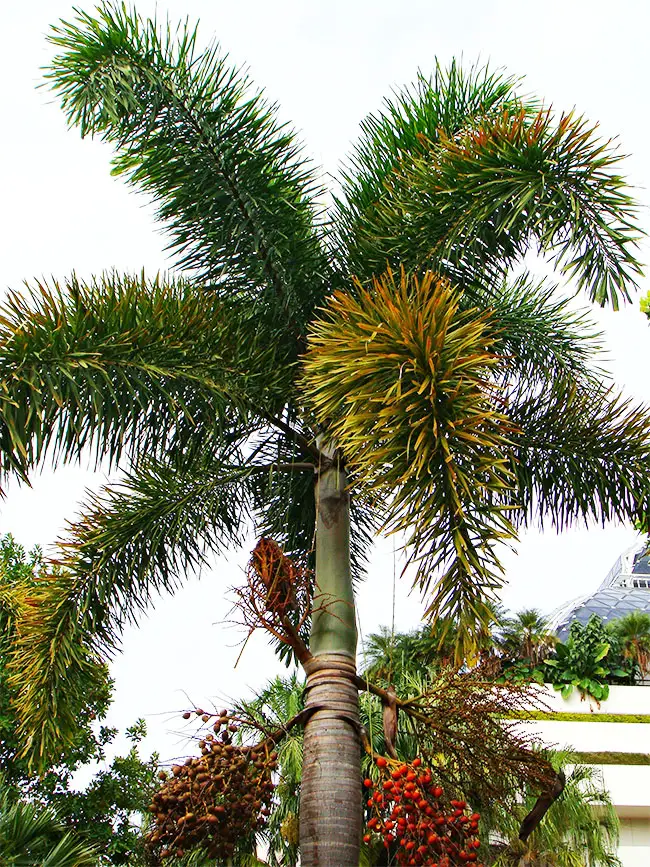


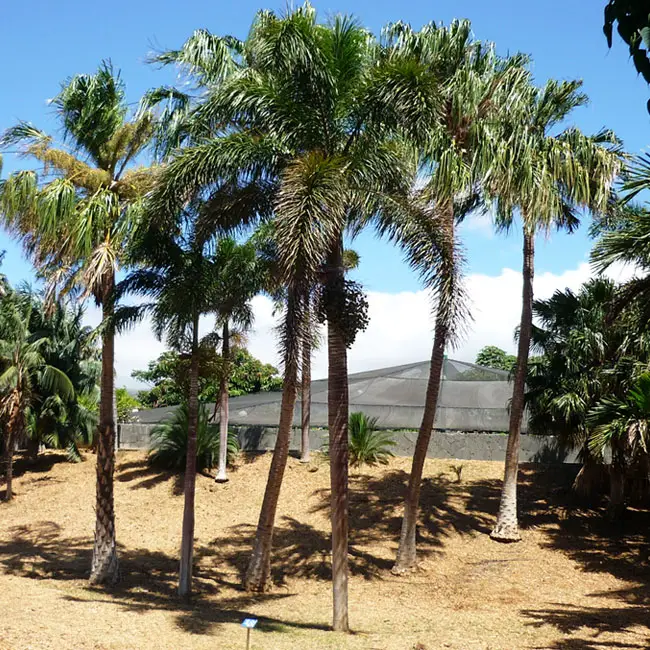

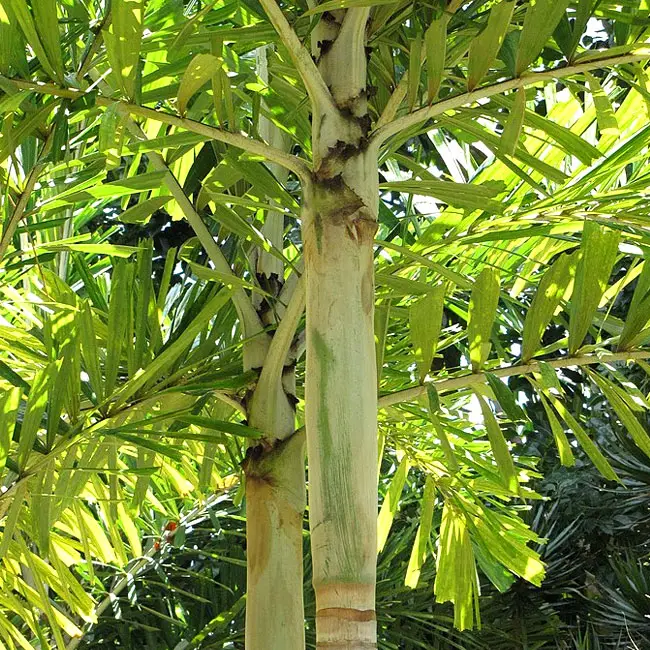
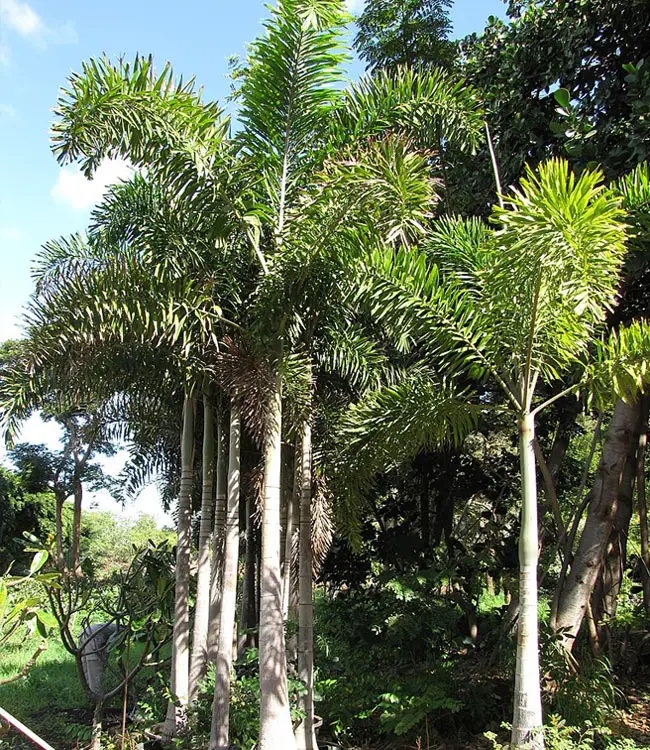
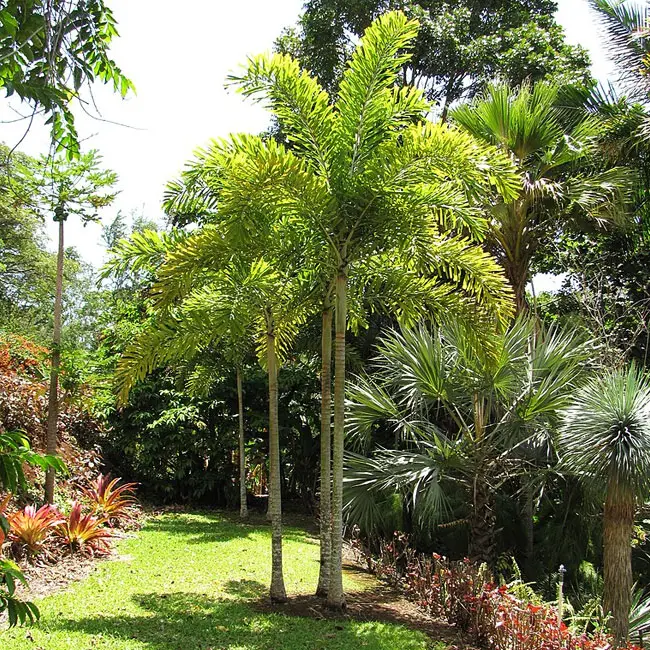
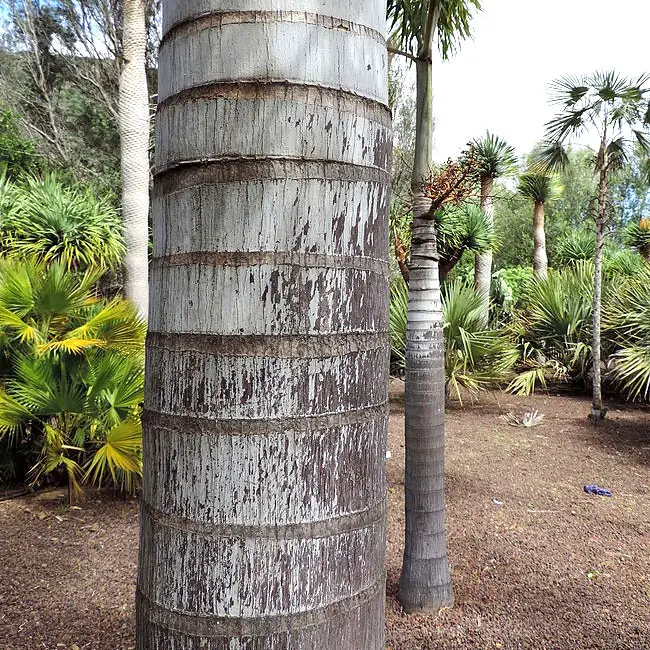
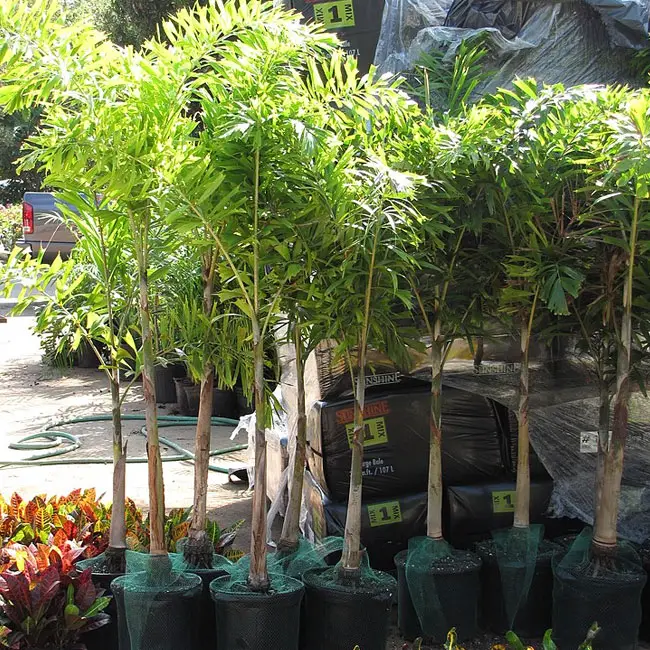
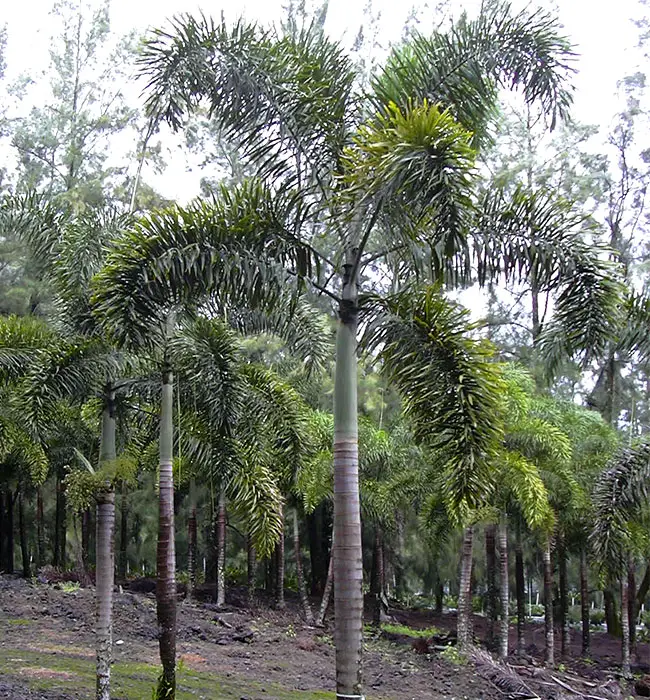
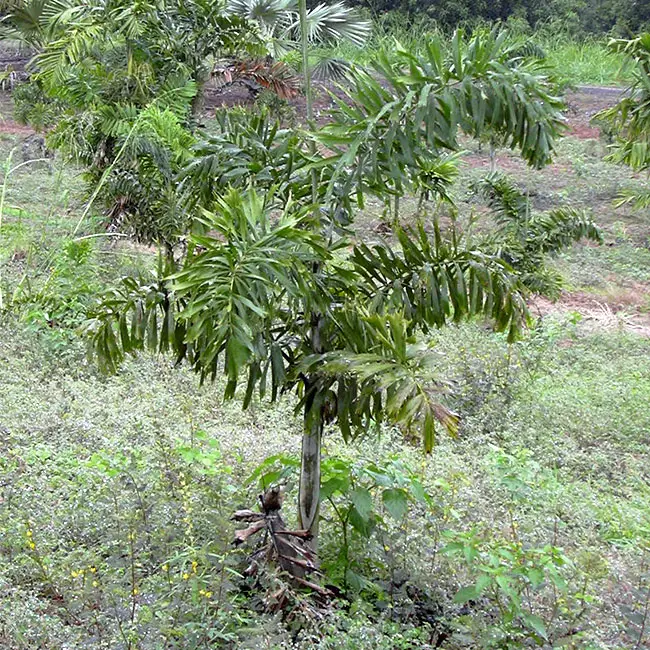
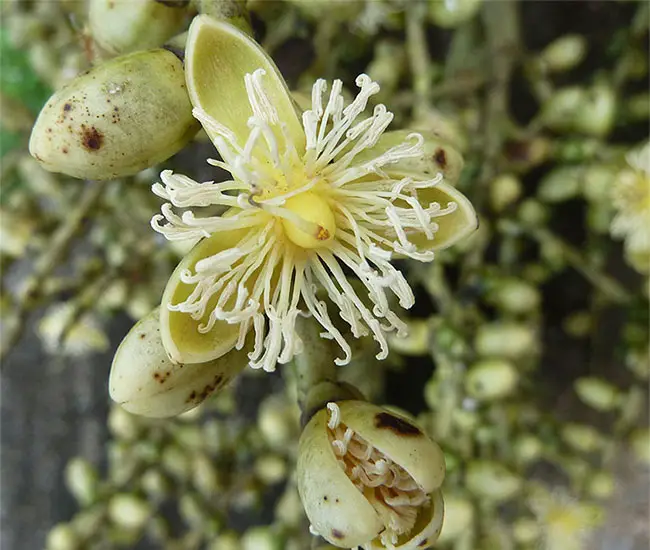

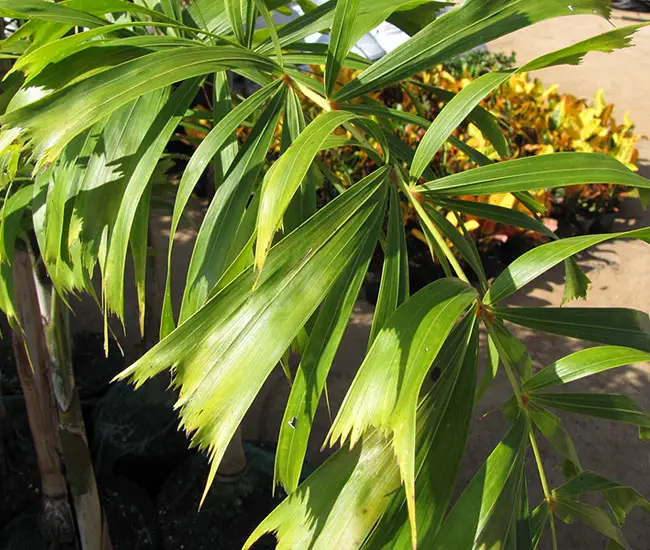
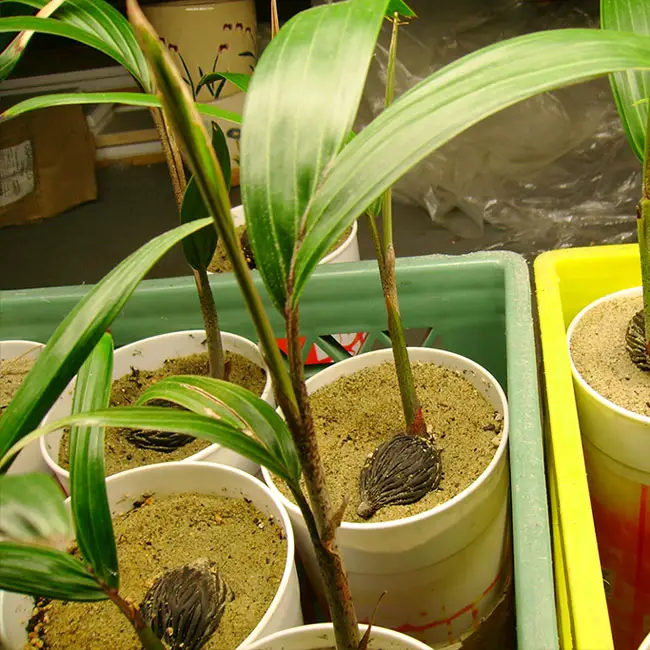
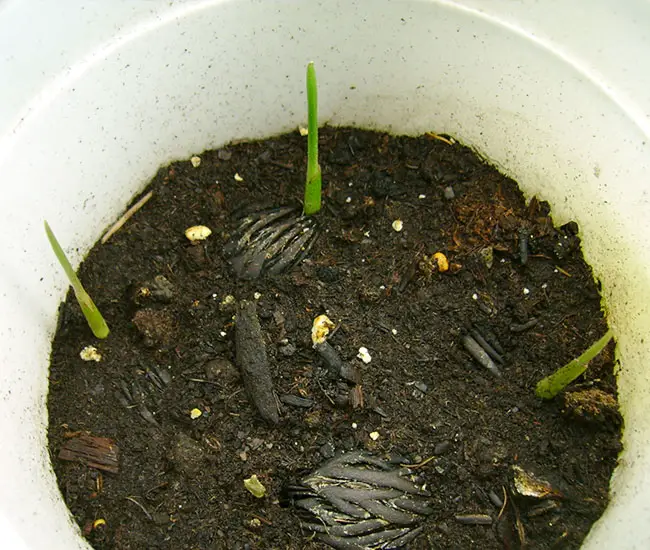
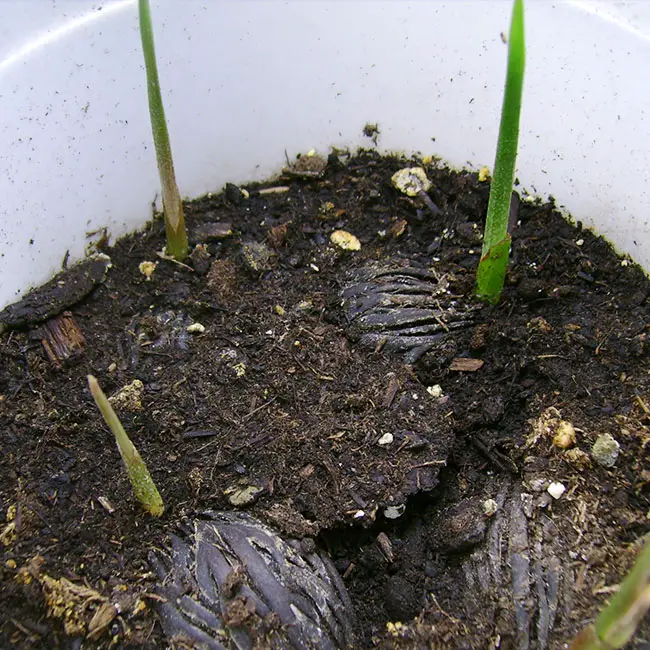
More information can be found on EDIS and Floridata sites.

Can you be more specific as to fertilizers recommended for the Foxtail Palm? I have a pretty tree and do not want to harm it in any way, but the foliage is sort of pale looking and I would like to darken it somewhat.
Thanks for any advice or help.
Jim Harris
Can you tell me how wide the trunk base will become?
Add manure/
Put banana peels in a pot full of water. Keep it for 5/7 days then stirr it and add this water to ur palm
Or u can use NPK